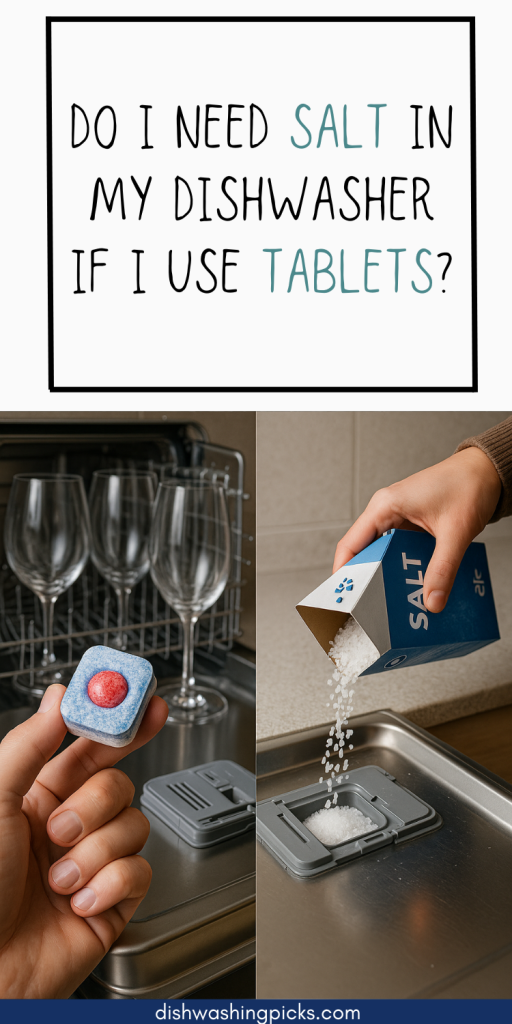
So, Tablets = No Salt… Right?
Alright, let’s get real. You finally ditched the old-school powder and started using those fancy dishwasher tablets. They clean, they shine, they even smell good. But then someone says, “Don’t forget to refill the salt!”
Wait, salt? Isn’t that already in the tablet?
Here’s where it gets a little murky. Dishwasher salt and detergent tablets do totally different jobs—but most people lump them together like they’re twins. So let’s break it down and find out whether you’re off the hook on adding salt or if your machine still secretly craves it.
The Basics: What Salt in a Dishwasher Actually Does
First, this isn’t table salt we’re talking about. Dishwasher salt is specially formulated to help your machine’s built-in water softener do its job. And no, not every dishwasher has one—but if yours does, it’s probably there to prevent limescale from wrecking your heating element or leaving white residue all over your glasses.
Here’s the short version:
- If you live in a hard water area, your dishwasher needs help softening that water.
- Salt regenerates the resin in the softener unit so it can keep trapping those pesky minerals.
- Without salt, your machine might still run—but over time, you’ll start seeing dull dishes and cloudy glassware.
Think of salt like skincare for your dishwasher: not always urgent, but super helpful if you want it aging gracefully.
What About the Tablets? Aren’t They “All-in-One”?
Aha, here’s where it gets sneaky. Yes, many dishwasher tablets these days are labeled “All-in-One” or “3-in-1” or even “Quantum Nuclear Shine Pods” (okay, maybe not that last one). But guess what?
They often don’t include enough salt substitute to replace dedicated dishwasher salt—especially in areas with hard water.
Some do add a small water softening agent, but it’s a supplement, not a full replacement.
Try thinking of it this way:
Using tablets without salt is like washing your car with wax-infused soap but skipping the rinse—it looks okay at first, but give it time and the buildup starts to show.
Real-Life Example: Anna’s Cloudy Glasses Crisis
Let’s say Anna lives in London, which is notorious for hard water. She switched to “5-in-1 tablets” a few months ago and stopped filling the salt compartment. At first? No problem. But now she’s noticing her wine glasses have that permanent foggy look.
What happened?
The softening function wore out. Without salt, her machine couldn’t regenerate its resin beads anymore. Boom—hard water buildup, dull dishes, and possibly shortened appliance lifespan.
Lesson learned? Salt matters, even when you think the tablets have your back.
The Quick Checklist: Do You Still Need Salt?
Let’s break it down simply:
| Do You Have… | Do You Need Salt? |
| Hard water in your area | Yes |
| A dishwasher with built-in softener | Yes |
| Using basic tablets (not “all-in-one”) | Yes |
| Soft water AND no softener | Probably not |
Still unsure? Here’s a quick test:
If your dishwasher has a salt compartment, chances are you’re meant to use it.
So, Should You Add Salt?
If your dishwasher has a built-in water softener and you live in a hard water area, yes, you still need salt—even if you use all-in-one tablets. The tablets help with cleaning and a bit of softening, but they’re not a full replacement for dedicated dishwasher salt.
Want to be safe?
- Check your user manual
- Look up your local water hardness level
- Peek inside your dishwasher for a salt warning light or compartment
